Huntington Beach, CA Pollen and Allergy Report for Summer 2023
Pollen Allergy Trends in Huntington Beach, CA
When is pollen lowest in Huntington Beach, CA?

October
Lowest month total PPM
Avg. PPM
When is pollen highest in Huntington Beach, CA?

January
Highest month total PPM
Avg. PPM
How does pollen in Huntington Beach, CA compare to California?
Huntington Beach has a higher average PPM than the state of California.
Huntington Beach yearly avg PPM:
California yearly avg PPM:
How does pollen in Huntington Beach, CA compare to the USA?
Huntington Beach has a lower average PPM than the USA.
Huntington Beach yearly avg PPM:
USA yearly avg PPM:
Is pollen worse this year in Huntington Beach, CA?
Spring 2023 was worse than spring 2022.
Spring 2023 PPM:
Spring 2022 PPM:
Average PPM in Huntington Beach, CA
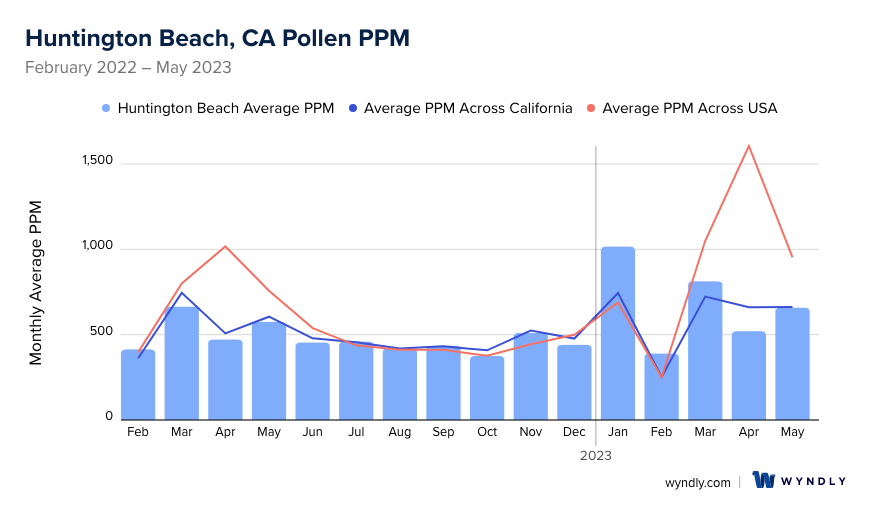
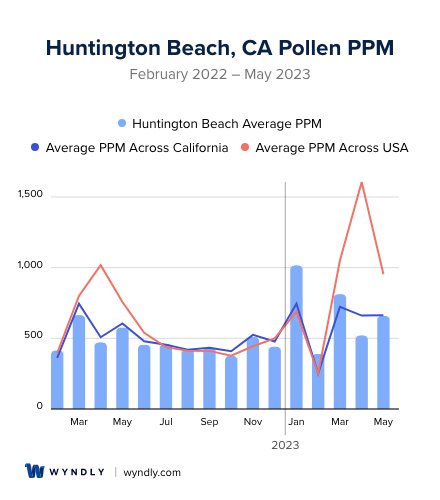
Huntington Beach, CA Pollen and Allergy Breakdown by Month
Grass
When is grass pollen highest in Huntington Beach, CA?
May has the highest grass pollen in Huntington Beach, CA with an average PPM of
When is grass pollen lowest in Huntington Beach, CA?
December has the lowest grass pollen in Huntington Beach, CA with an average PPM of
Tree
When is tree pollen highest in Huntington Beach, CA?
March has the highest tree pollen in Huntington Beach, CA with an average PPM of
When is tree pollen lowest in Huntington Beach, CA?
August has the lowest tree pollen in Huntington Beach, CA with an average PPM of
Weed
When is weed pollen highest in Huntington Beach, CA?
November has the highest weed pollen in Huntington Beach, CA with an average PPM of
When is weed pollen lowest in Huntington Beach, CA?
February has the lowest weed pollen in Huntington Beach, CA with an average PPM of
Huntington Beach, CA Pollen Monthly Breakdown by Pollen Type
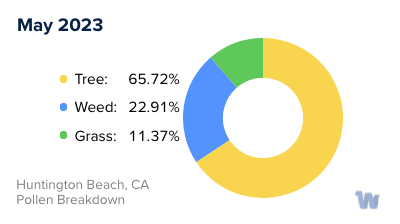
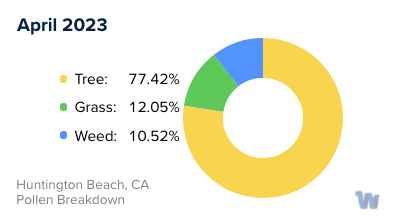
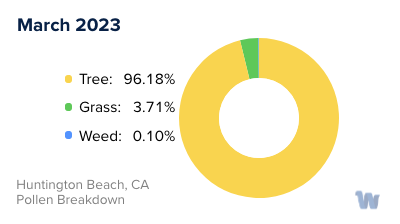
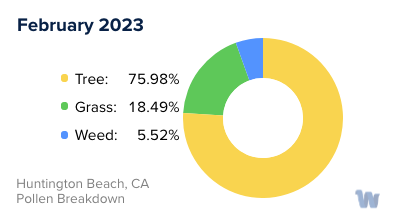
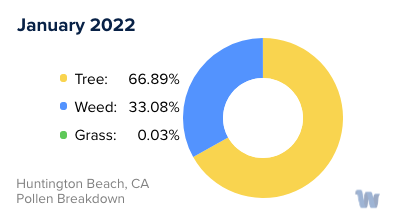
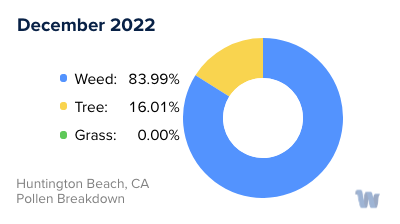
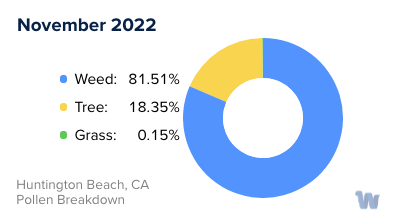
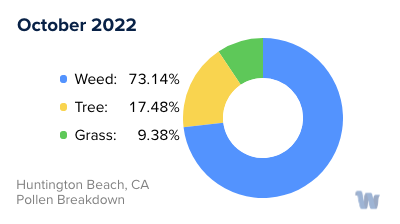
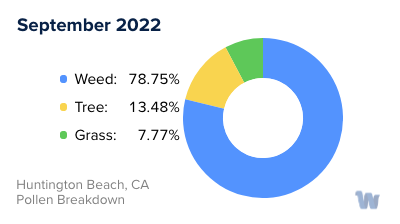
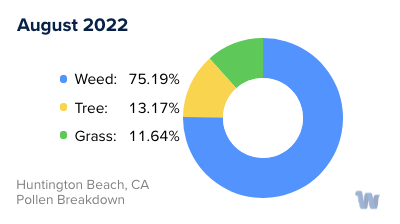
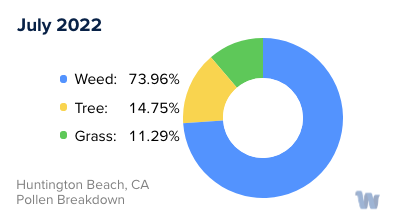
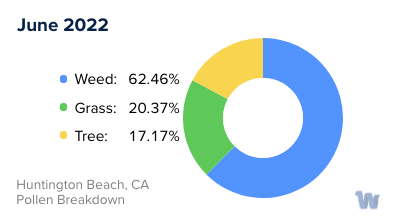
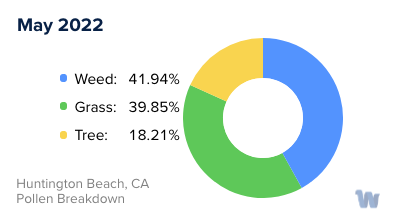
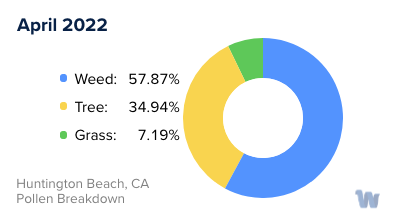
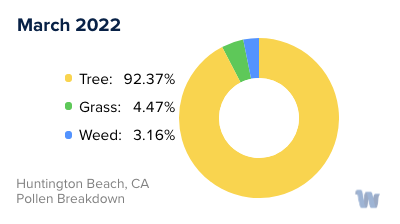
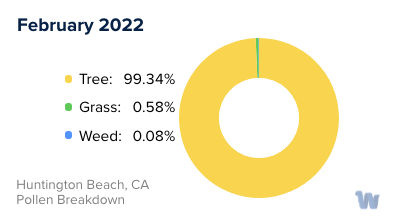
Pollen and Hay Fever in Huntington Beach, CA
Pollen allergies, often referred to as hay fever, can make certain times of the year uncomfortable for residents of Huntington Beach, California. While the city is known for its sunny beaches and vibrant surf culture, it also harbors a variety of plants whose pollen can trigger allergy symptoms. Understanding the types of pollen and the seasons when they are most prevalent can help locals and visitors alike prepare for the potential impacts on their day-to-day activities.
In Huntington Beach, two main types of pollen are primarily responsible for allergies: tree pollen and grass pollen. Tree pollen is typically the first to appear in the year, often starting to cause symptoms in late winter and early spring. Local trees such as Oak, Pine, and Cedar are some of the common culprits, releasing microscopic particles into the air which can cause allergic reactions in sensitive individuals.
As the season shifts from spring to summer, grass pollen begins to take center stage. The warm, dry conditions of Huntington Beach are ideal for grasses such as Bermuda grass, Rye grass, and Kentucky Bluegrass. These types of grass release their pollen into the warm summer air, creating a second wave of potential allergens for residents to contend with.
Finally, as summer transitions into fall, ragweed pollen can also be a concern. While ragweed is less common in Huntington Beach than in some other parts of the country, it can still contribute to hay fever symptoms for those who are sensitive to it.
In summary, pollen allergies in Huntington Beach are driven primarily by tree pollen in the late winter and spring, grass pollen in the summer, and to a lesser extent, ragweed pollen in the fall. Being aware of these patterns can help those affected by pollen allergies anticipate potential challenges and adjust their plans accordingly. While this coastal city is a beautiful place to live and visit, its pollen profile is something to keep in mind when spending time outdoors during pollen-heavy seasons.

